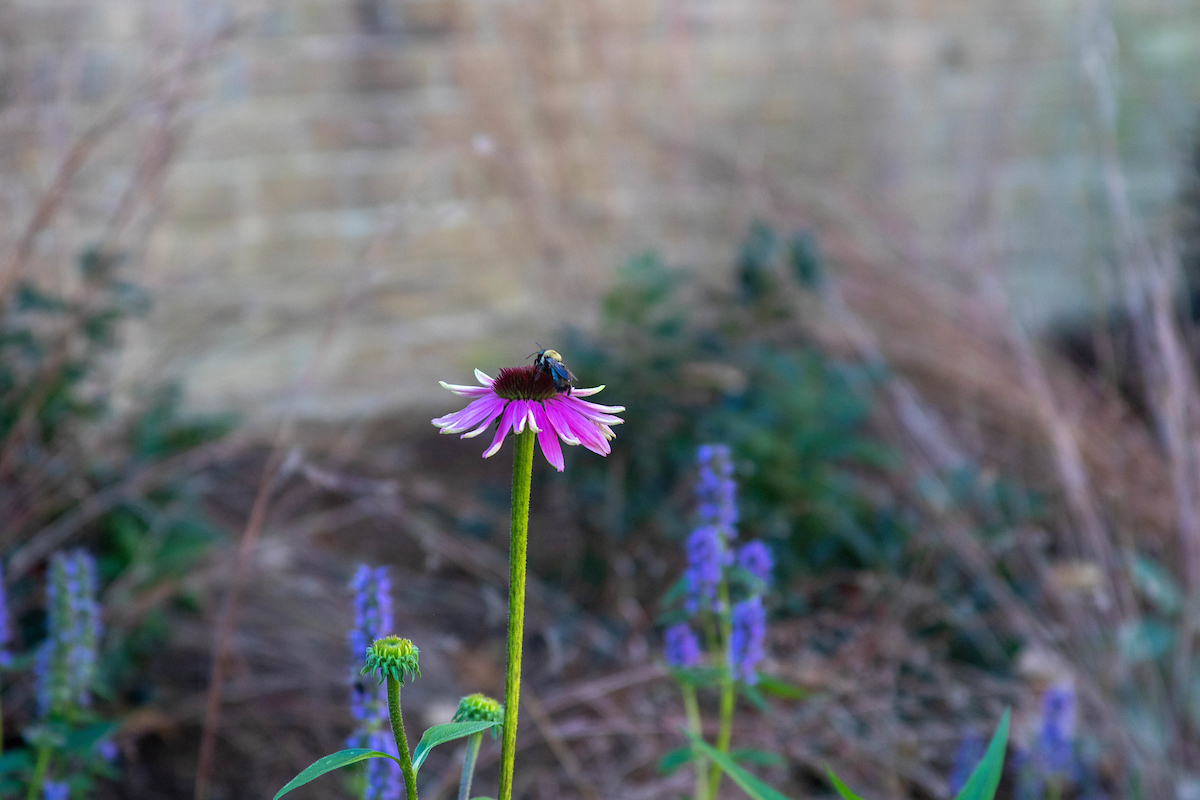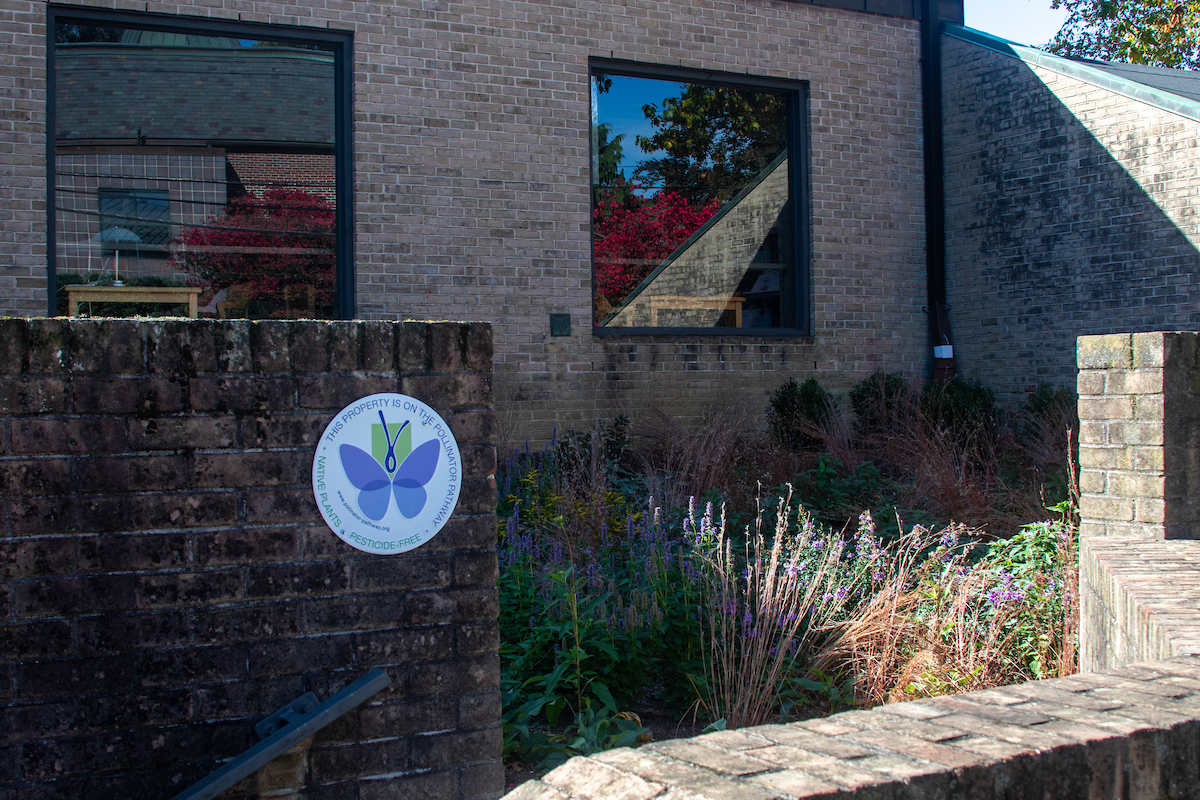Filed under:

This fall, in addition to the Class of 2028, Sarah Lawrence is recruiting pollinators to become a part of its community. But instead of tours and open houses, the College has created pollinator pathways to attract bees, birds, and butterflies.
These ecologically rich environments consist of diverse, native plantings and can be found in several spots around campus, such as outside the Siegel Center, along the new arbor pathway, in the circle outside the Barbara Walters Campus Center, and in the Library’s new Courtyard Garden.
The native plantings will prevent erosion as they stabilize soil with their fibrous roots, helping to maintain our campus for years to come. In turn, the pollinator pathways will create reciprocity with several species in our surrounding communities.
“In urbanized areas like Bronxville, locations with flowers that pollinators can use can be widely spaced, creating stress on pollinators as they move from location to location,” Michelle Hersh, biology faculty, said. “A campus native plant garden can provide an important stopover point for flying pollinators, supplying them with pollen and nectar for food. It’s a great way to support local pollinator species, and the flowering plants they depend on as well.”
To cultivate the campus’s pollinator pathways, Flora Landscaping crew, led by Ani Adishian ’95, and Operations and Facilities planted thousands of natural nectar sources. These plant species include pale purple coneflower, ironweed, prairie dropseed, slender mountain mint, and milkweed.

The new installations are also the result of a yearlong dialogue between Mo Gallagher, the Assistant Vice President for Campus Operations & Facilities, and students & faculty in the Sarah Lawrence Interdisciplinary Collective on the Environment (SLICE). During the 2022-23 academic year, Gallagher frequently attended SLICE course meetings, advising students enrolled in the “Workshop on Sustainability Solutions at Sarah Lawrence” on what resources the College had and what it would need to support these supplemental initiatives.
“Working within our fiscal resources, these projects are a continued effort to invest in sustainability initiatives that are beneficial to the environment and to our community,” Gallagher said. “I am very proud of and grateful for the work Ani and her team did this summer to bring these pollinator habitats to fruition.”
The pollinator pathways are a visual representation of ongoing efforts by our students, faculty, and staff to affirm the College’s commitment to sustainability. Together, they are leading a multifaceted approach through SLICE, Green Rights Organization for the World (G.R.O.W), the Sustainability Committee, and Center for the Urban River at Beczak (CURB).
“The pollinator pathways are one initiative that results from the close collaboration between students, faculty, and staff who are all devoted to developing a more sustainable campus,” said Tricia Hanley, Director of the Child Development Institute and Chair of the Sustainability Committee.
Photos by Nyah Raposo '27